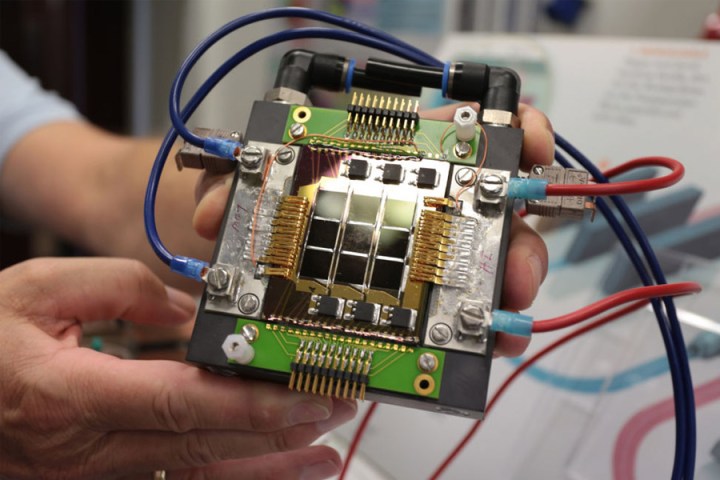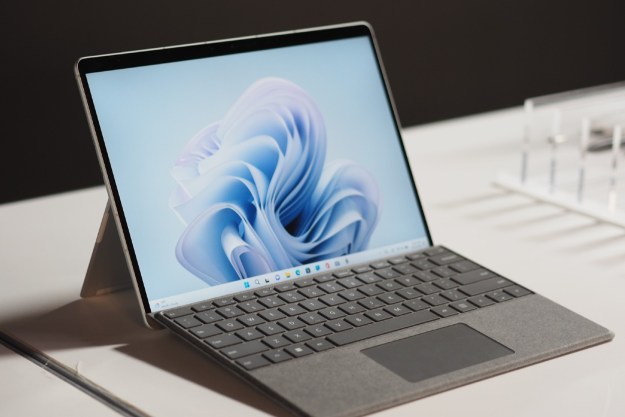
There have been a number of solutions suggested for this system over the years, but one of the more intriguing comes out of IBM’s fluid research labs, which are currently testing the idea of using what it calls “5D electronic blood,” which should be able to deliver power and cooling in one futuristic mix.
The system is in its very earliest stages, but works in principle. Using IBM’s developed microfluidic channels on a sample chip, it is able to funnel in a cooling fluid solution mixed with what Ars Technica calls, “redox couples,” that are capable of producing electricity when oxidized and then reduced again to lose that charge. The idea is they flow through the chip, cooling it and delivering power to it at the same time.
Because of this unique system, power can be delivered in much more versatile ways than traditional hard connectors, allowing for stacked chips that could make it possible for multiple CPUs and GPUs to be built on top of one another, each with their own unique power and cooling system.
By doing so, hotspots should become less of an issue, thereby allowing for much higher clock speeds – as has been evidenced by some overclockers using liquid nitrogen and other super cool compounds to push processors far beyond their manufacturer stated limits.
A lot of this is potential rather than proved theories, but in principle it works. IBM has managed to deliver 100 milliwatts of power to a chip while dissipating all of its generated heat. It will need to be scaled up and perfected before it becomes commercially viable, but if achieved, IBM could usher in a whole new age of efficient silicon, which could help stave off the need for a switch to different building materials for future computers.
Don’t fret though, the 5D moniker isn’t a suggestion that IBM is delving into time travel or M Theory. It’s just 3D, electrical, and cooling technology, so 5D electronic blood.
Editors' Recommendations
- GPT-4.5 news: Everything we know so far about the next-generation language model
- 5 Ways to optimize your home Wi-Fi network for remote school and work
- Sony confirms that it’s creating a next-generation PS5 VR headset
- Volkswagen and HP want your next car to have 3D-printed parts



